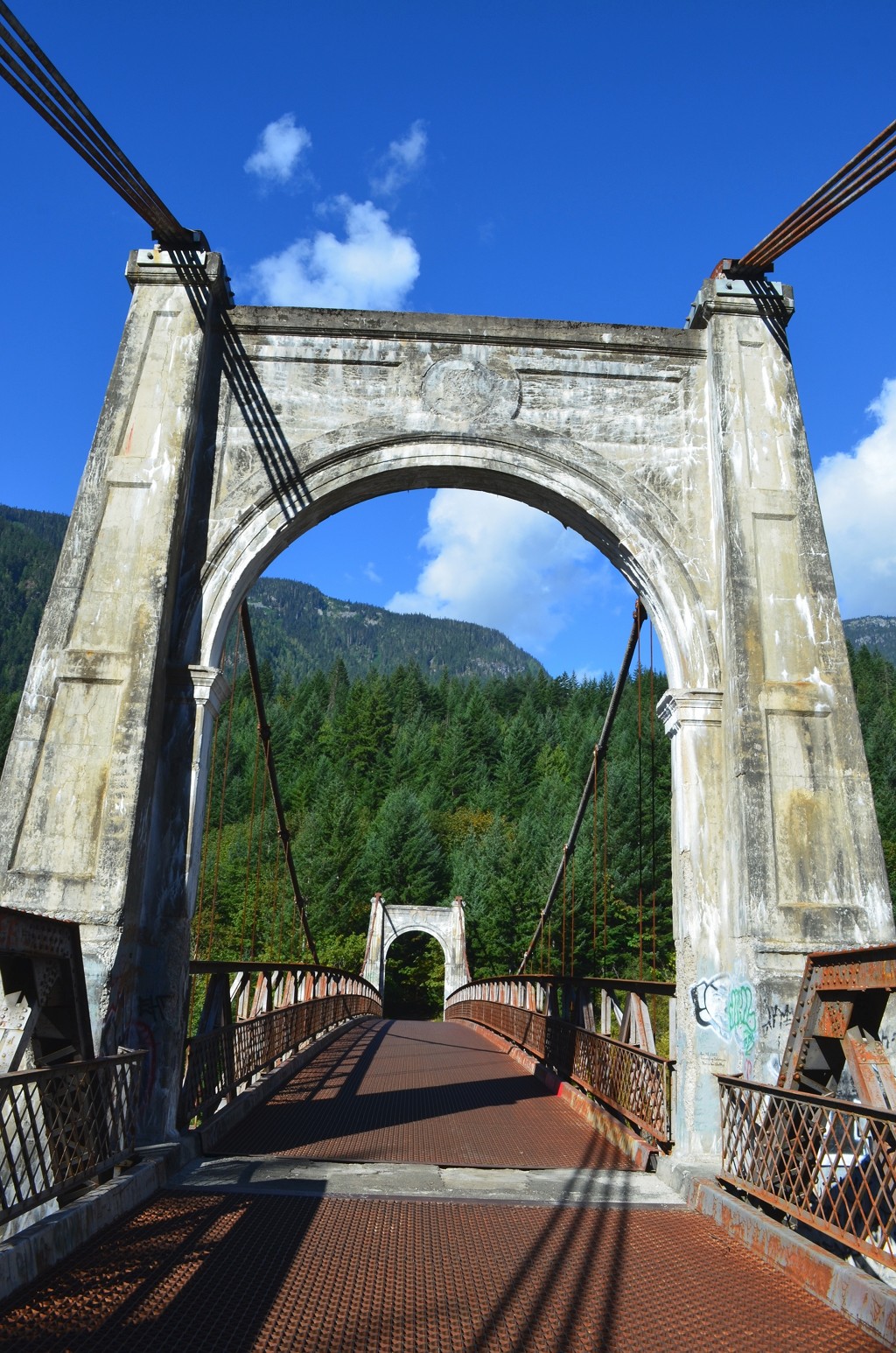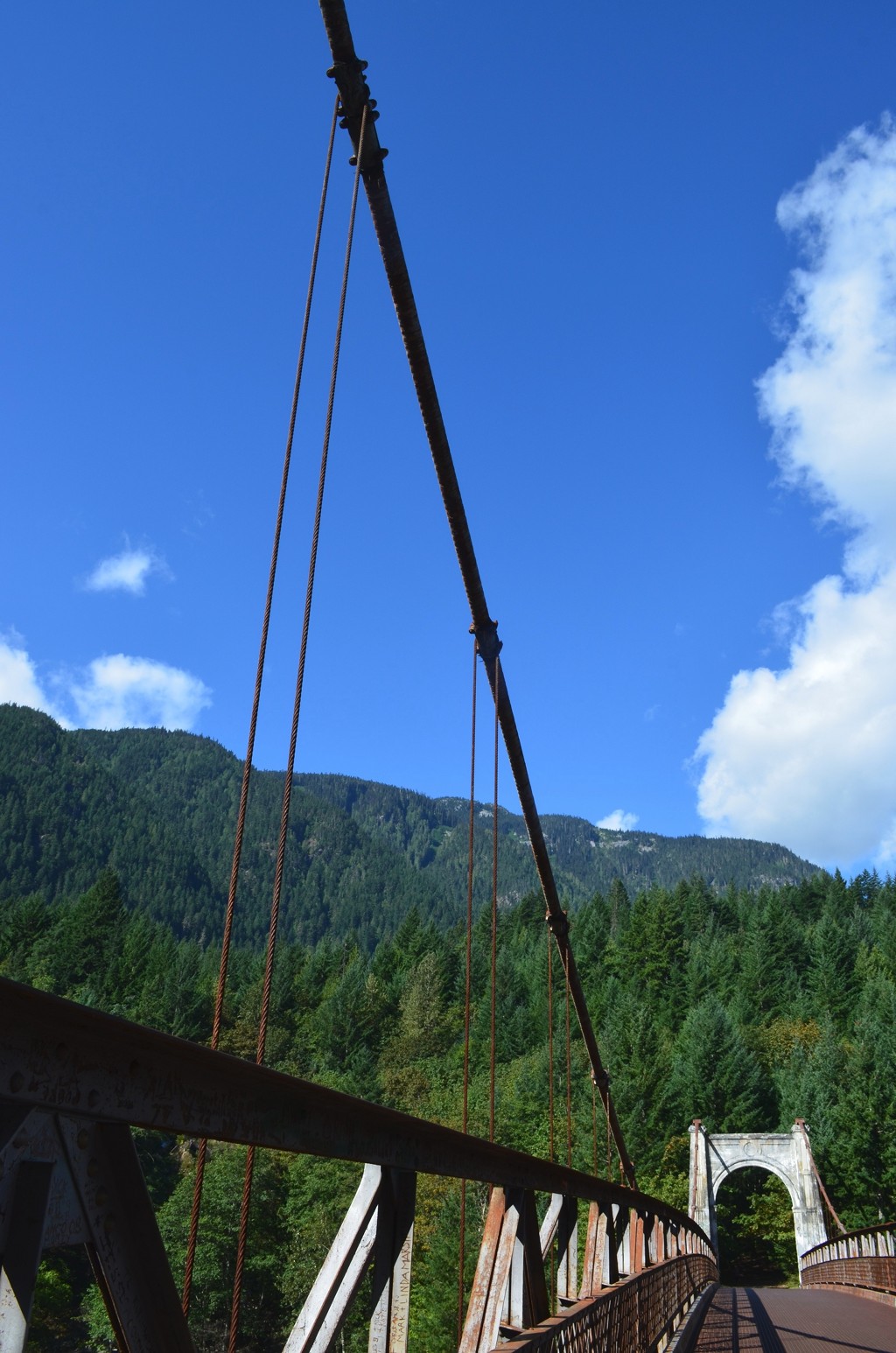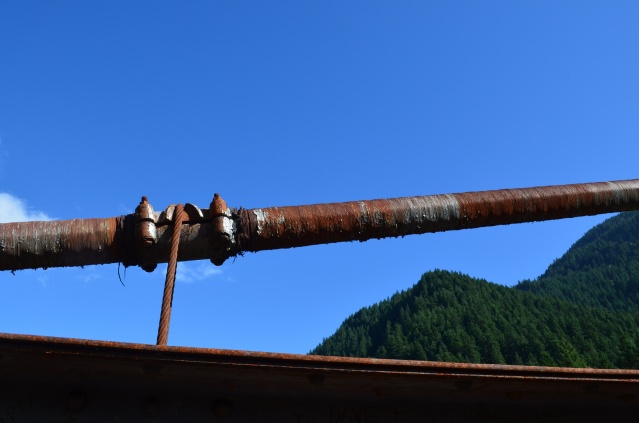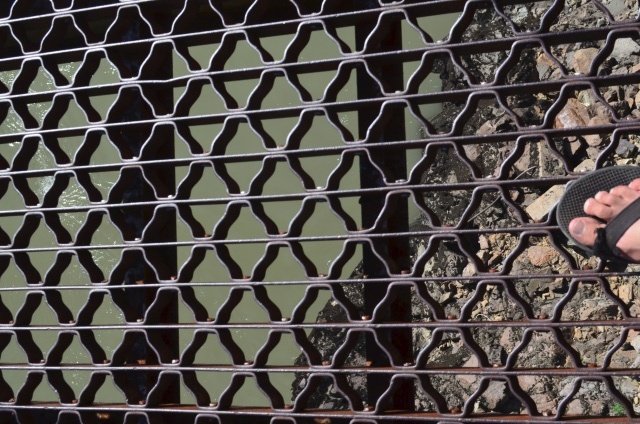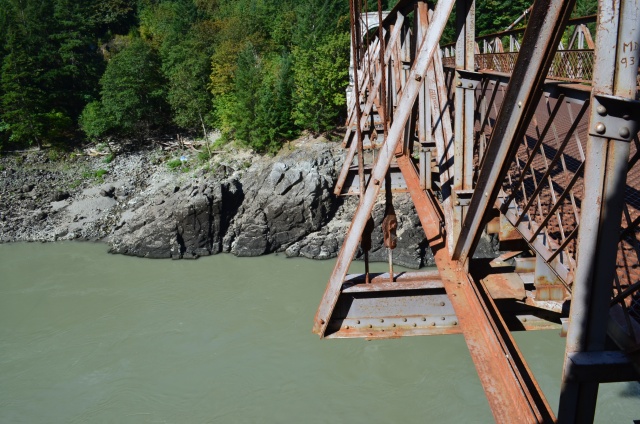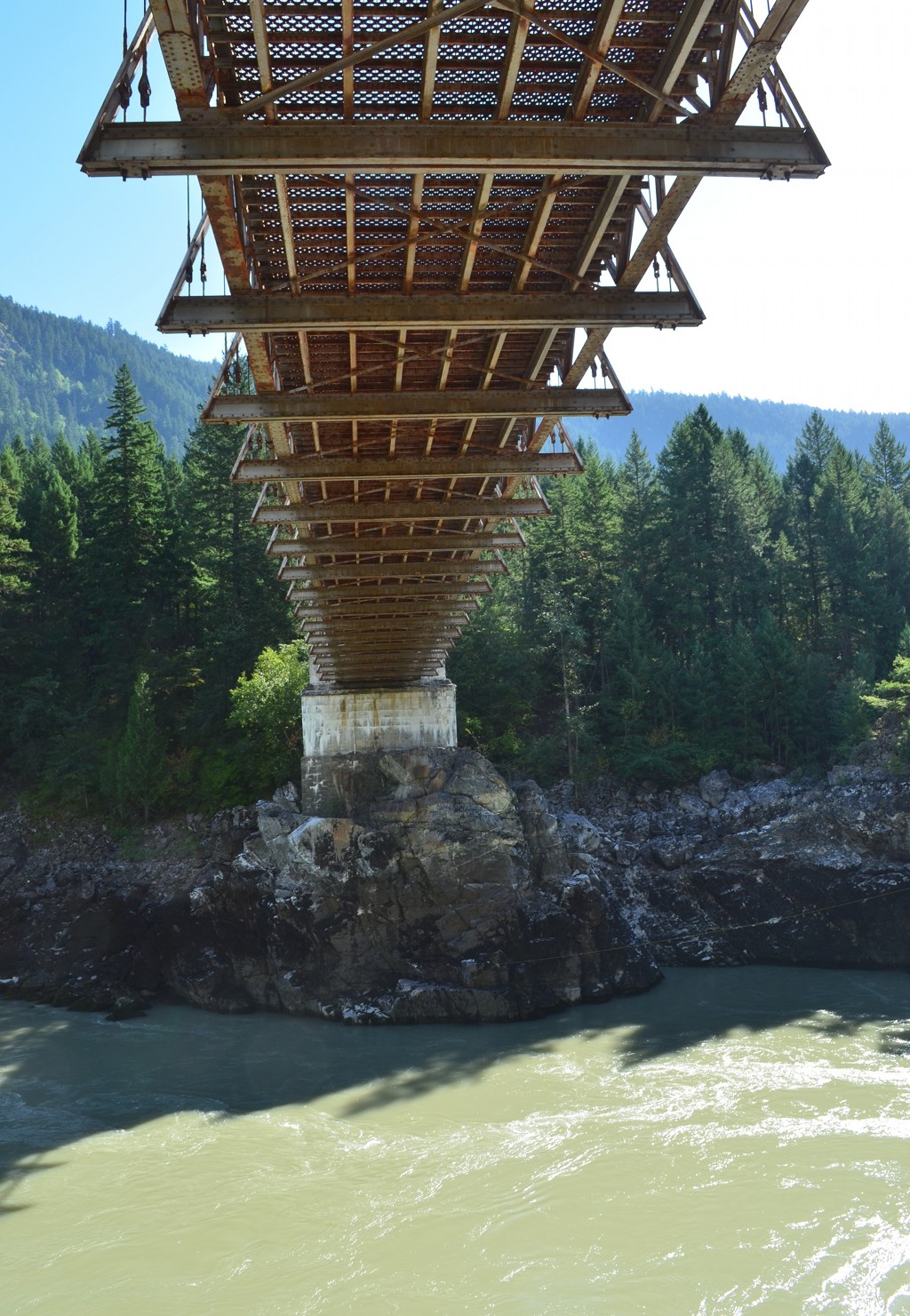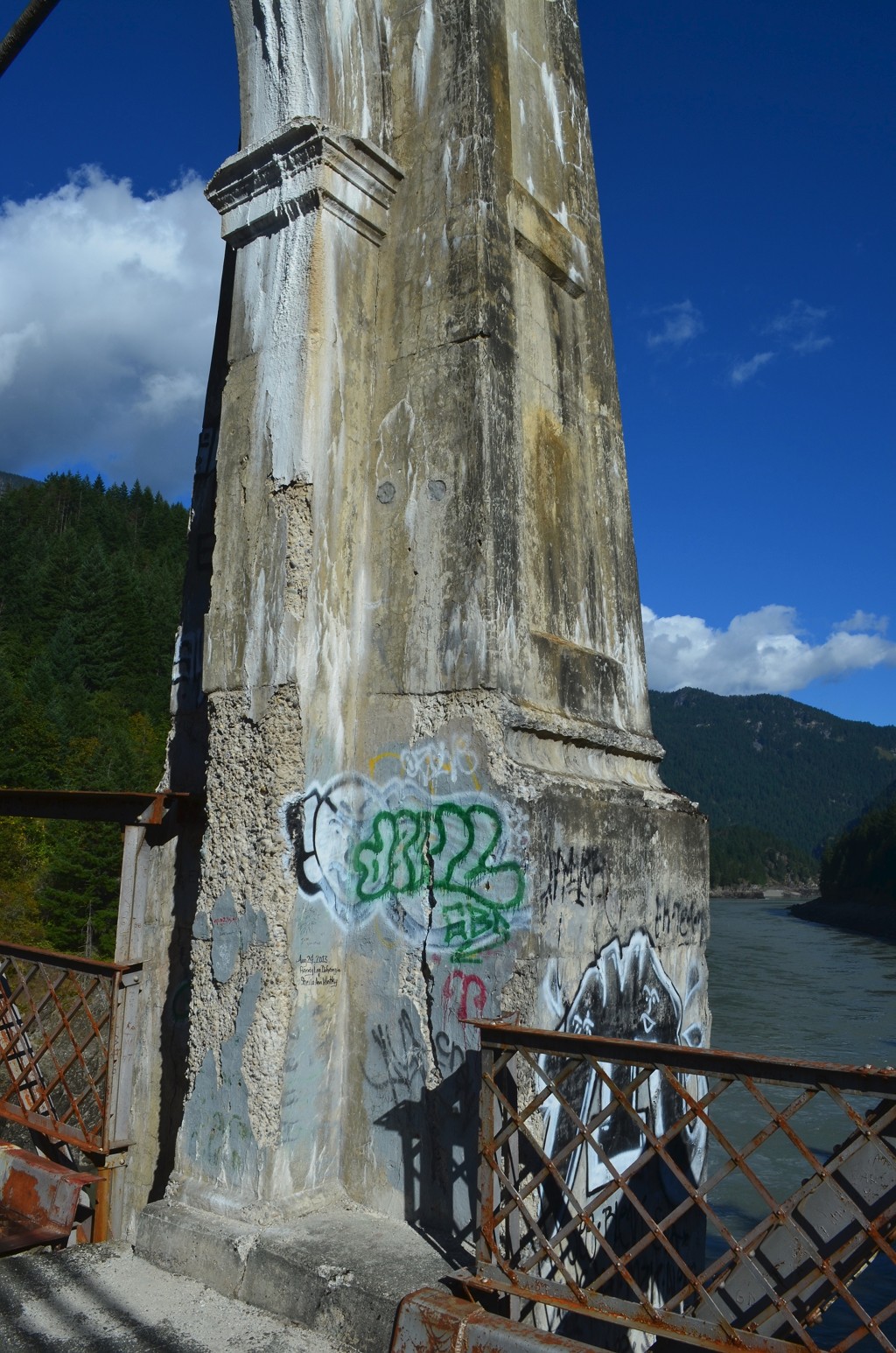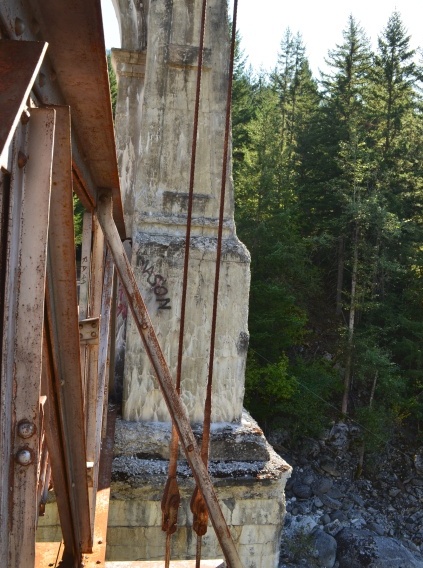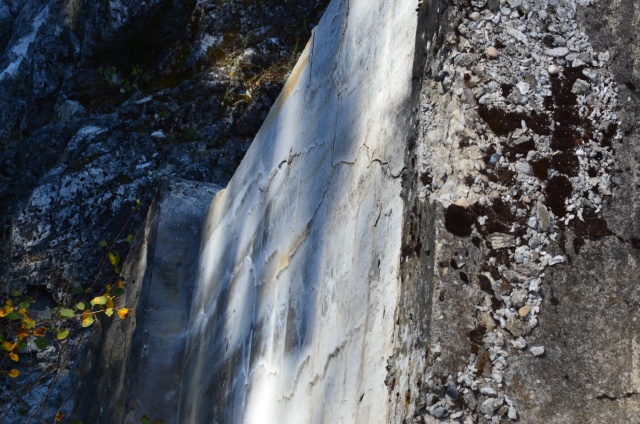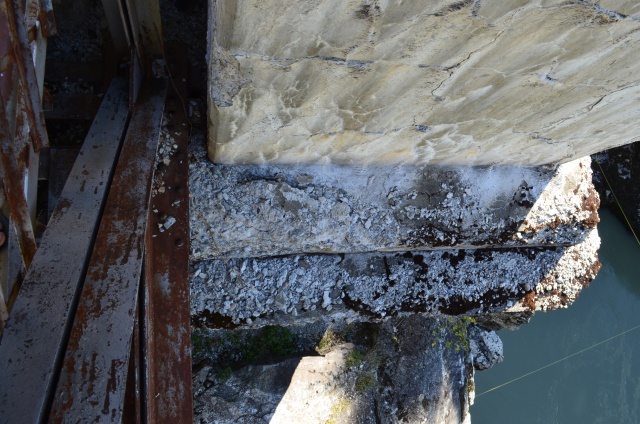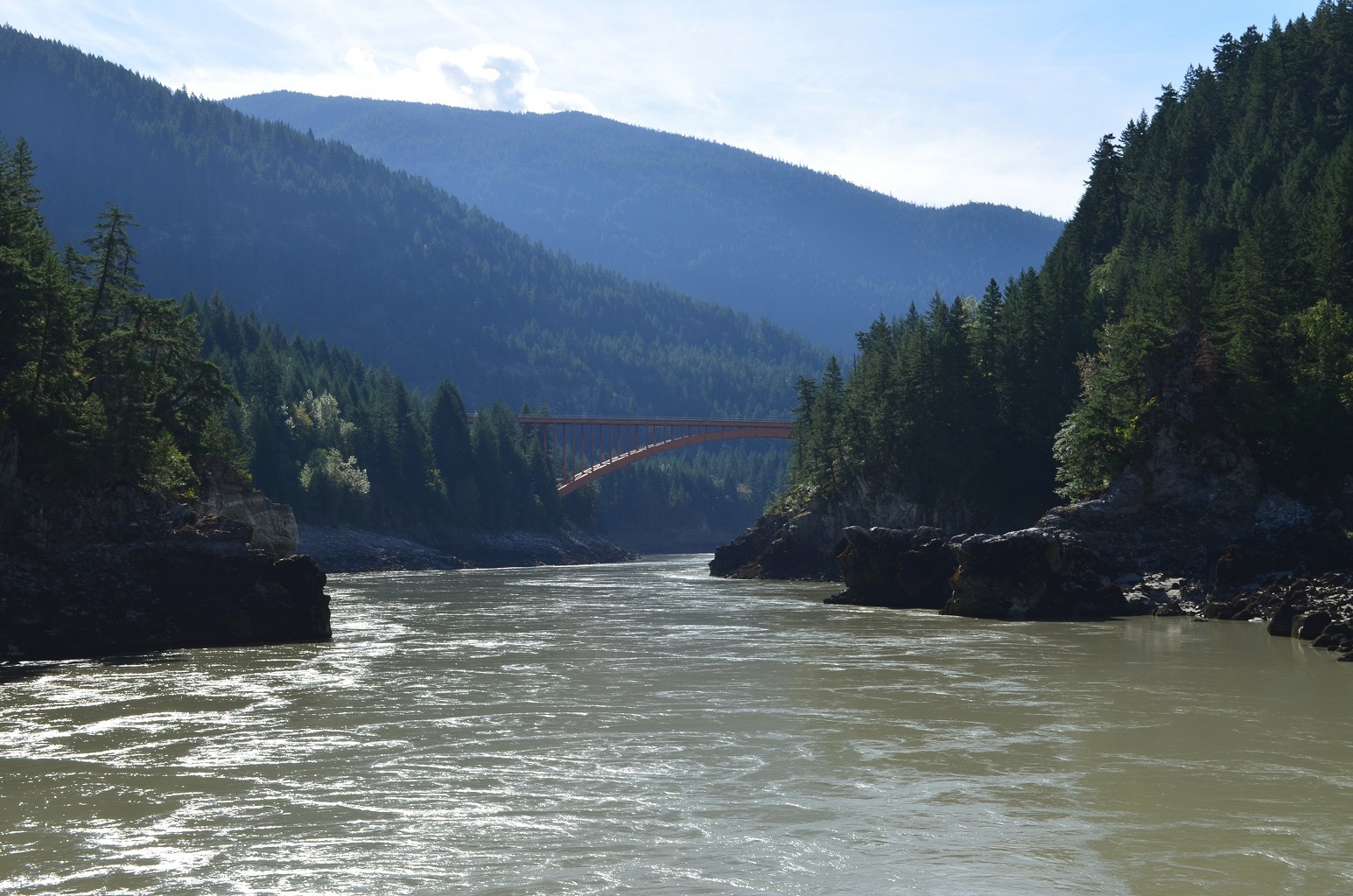Built: 1928
Length:
Type: Suspension Bridge
Location: Fraser River, British Columbia
Reason for listing: Poor condition of towers strongly suggests that this bridge could fail well under its design load.
Author's Note: British Columbia replaced this bridge many years ago, as discussed at the end of this entry. The old Alexandra suspension Bridge is now closed to motorized traffic. It now remains as a historic site and provincial park. Keeping the bridge open to foot traffic is valuable and this page is not intended to suggest otherwise. When further deterioration of the bridge prevents the safe passage of foot traffic a repair should be seriously considered. While these pictures were being taken the author noticed a child discovering that bridges are cool. Maybe he will grow up to be a future engineer, partly due to inspirational sites such as this..
A brief history is provided by the signs posted in the park, and repeated here. Some information can also be found on Wikipedia.
1808 - Simon Fraser
Upon encountering the formidable waters of the river around Hell's Gate, Simon Fraser and his men were forced to clamber over the sheer cliffs by means of a platform of sticks, trees and vines suspended hundreds of feet above the churning waters.
"We had to pass where no human being should venture."
1847 - A.C. Anderson
1847: A.C. Anderson was assigned the task of finding a British route between the coast and the interior. He marked and cut a trail from Yale to Spuzzum over the Cascade Mountains and through to the Nicola Meadows south of Kamloops.
1848: In June, three fur brigades passed over Anderson's new route. The return journey in August was disastrous. Despite taking every precaution, 70 horses and 25 pieces of merchandise were lost on this appalling journey. One man committed suicide at Alexandra.
"I have no hesitation in declaring it (Anderson's route) utterly impracticable for a large brigade such as ours"
1858 - Gold!
When gold fever struck, the territory was not prepared to cope with the sudden influx of 30,000 American prospectors.
Transportation was at an archaic level. Scores of men drowned as they tried to negotiate the treacherous waters of the Fraser River in their flimsy canoes, or attempted to climb over the sheer Canyon walls carrying their packs. Due to the hazards, the government provided a small ferry to move people and goods across the river just south of Alexandra Bridge in 1858.
The "Fraser Canyon War" resulted from the exclusion of the local Indians from the gold bars on their traditional land.
Tempers flared and violence erupted between natives and miners. Killings began, with both sides falling victim to each other's bullets and arrows. Stripped, headless corpses of white miners could be seen floating down the river.
1861-1863 - Alexandra Bridge
The Royal Engineers surveyed a route through the Fraser Canyon including the bridge crossing. However, the section of road between Chapman's Bar and Boston Bar was constructed under contract to Joseph Trutch.
By September, 1863, the spectacular 91.44 meter suspension bridge was complete. The bridge was tested by driving a four horse team and a 2.75 tonne wagon over the span. To everyone's delight, the deflection was less than 0.635cm.
To recover the $45,000 cost of construction, a toll of $7.40 a ton was charged.
1880-1885 - The Railway Arrives
The construction of the Canadian Pacific Railway resulted in another "boom" - during which 5,000 men (1/4 of the entire population of the province) worked on the 46.7 kilometre section between Emoruy and Boston Bar.
1894-1912 - Abuse & Neglect
The Canadian Pacific Railway had partially been built by sacrificing the Cariboo Road for materials and roadfill. The great flood of 1894 compounded the problem by wreaking havoc with the old wagon road and washing away the decking of the Alexandra Bridge.
In 1912, the suspension cables were cut so that no accidents would occur on the damaged bridge.
The Twentieth Century
Until 1915, when the Canadian Northern Railway was built on the eastern riverbank, the C.P.R. for a time was the only means of transport through the Canyon.
With the increasing popularity of the automobile, it became apparent that once again, a road would be required through the Canyon. To meet the demand, a new suspension bridge (the one that still stands today) was constructed in 1928 on virtually the same site as the original one. It carried thousands of vehicles over its 36 years, finally closing with the completion of the Trans-Canada Highway in 1962.
Now for a detailed examination of the bridge.
Thankfully, the anchors for the suspension cables appear to remain in good condition.
Likewise, there are no visible problems with the cables themselves. Though internal corrosion could be a problem. It is interesting to note that the 4 anchor cables appear to join into one suspension cable at the top of the tower.
No problems holding up the bridge itself.
The cable joints appear to be intact, and provide some room for sway.
The bridge decking has an interesting design, of which appears to have been popular in the early to mid 20th century. The steel grate provides good traction, a light weight sturdy deck, and presumably eliminates the need for winter plowing. Given the age of the bridge there is remarkably little corrosion, though the amount of maintenance done over the years is not known to the author. The see through aspect provides a nice view of the river below.
An examination of a joint in the railing shows a notable amount of rust. Thankfully, the two dark curves are irregularities due to how the metal was cut, and are not cracks.

The side railings are sturdy, and secure. At least, if you remain on the correct side.
The riverbank provides a nice view of the underside of the bridge, and the sky seen through it.
However, the towers of the bridge are deteriorating. They show spalling, substantial fractures, exposed rebar, and corrosion. Water ingress is presumably speeding the corrosion that is eating away at the rebar even as you read this. It appears probable that the one of towers will be the first member to fail. Details of the east towers are shown here.
Last Updated: January 2014; Updated format.
© David C. Hunter, 2013
fb {at) dragonsdawn (dot] org


